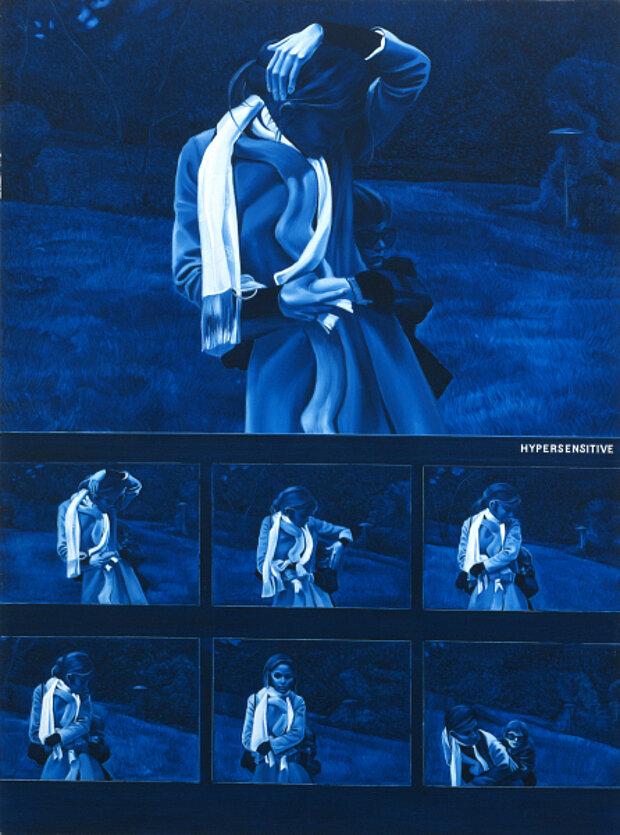
Monory, Jacques
Hypersensitive
1970

© mumok
| Object description | Oil on canvas |
|---|---|
| Object category | painting |
| Material |
Painting layer:
oil paint
Support:
canvas
|
| Technique |
Object:
oil paintings
|
| Dimensions |
Object:
height: 202 cm,
width: 152 cm
Frame:
height: 206,3 cm,
width: 154,6 cm,
depth: 6,2 cm
|
| Year of acquisition | 1981 |
| Inventory number | ÖL-Stg 119/0 |
| Creditline | mumok - Museum moderner Kunst Stiftung Ludwig Wien, Leihgabe der Österreichischen Ludwig-Stiftung |
| Rights reference | Bildrecht, Wien |
| Further information about the person | Monory, Jacques [GND] |
| Literature |
Hyper Real I Love Pop. Europa-Usa anni '60. Mitologie del quotidiano |
‘I am a painter of cinema. Citizen Kane impressed me more than Veronese,’ says Jacques Monory. So it is little wonder that his pictures are closer to film and photography than to the history of painting. Born in 1934, the artist is part of the ‘Figurative Narration’ group. This movement came into being in the 1960s in France and, along with the contemporary new realism movement, is regarded as the European variant of US American Pop Art. As with many artists of the time, Jacques Monory also makes use of the world of media images as a starting point for his art. In the 1960s Monory, who along with being a painter is also an experimental filmmaker, developed an unmistakable style that combined painting, photography and film. The choice of subject, the framing and the frame employ elements of film, the color palette is reduced and makes the painting appear as if they were seen through a blue filter. "Hypersensitive" is a characteristic example of his work. We see a young woman together with a young boy in a park-like landscape. The sequence of images is reminiscent of film stills and shows six views of the large depiction of the scene. These are slightly staggered in time. Here Monory makes use of the filmic practice of the ‘fixed image’, the freeze frame. This artistic device entails stopping the camera movement and action at points with strong emotional content in order to produce an increase in dramatic effect and tension. Combined with the typical <k>Monory blue<k>, also a trick used in film, the depicted scene takes on a dreamlike immateriality. A blue filter is used in film as a day-for-night filter, allowing night scenes to be shot during daylight. Since the process is ubiquitously employed in US American series, it has become known as ‘American night’. Monory’s comment on the obvious artificiality of these scenes: ‘The blue has a particular meaning. It is the expression of a wish for the impossible. (…) By bathing things in blue I am indicating that the things that appear so realistic are, in a certain sense, just illusions.’
© mumok – museum moderner kunst stiftung ludwig wien